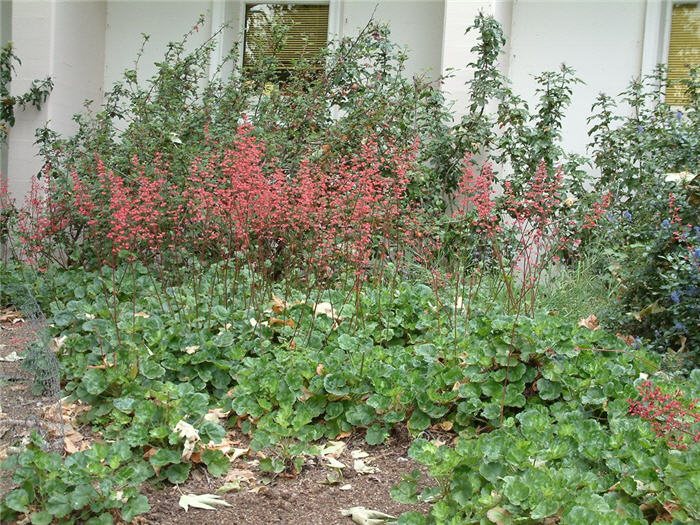| Botanical Name: Heuchera sanguinea | |
| Common Name: Coral Bells |

-
Anatomy
-
Culture
-
Design
Plant Type
Perennial
Height Range
1-3'
Flower Color
Pink, Red, White
Flower Season
Spring, Summer
Leaf Color
Green
Bark Color
n/a
Fruit Color
n/a
Fruit Season
n/a
Sun
Full, Half, Shade
Water
Medium
Growth Rate
Moderate
Soil Type
Sandy, Clay, Loam, Rocky, Unparticular
Soil Condition
Average, Rich, Well-drained, Dry
Soil pH
Neutral
Adverse Factors
n/a
Design Styles
English Cottage, Formal, Meadow
Accenting Features
Showy Flowers
Seasonal Interest
Spring, Summer
Location Uses
Entry, Perennial Border, Patio, With Rocks
Special Uses
Container, Cut Flowers, Mass Planting, Small Spaces
Attracts Wildlife
Hummingbirds
Information by: Stephanie Duer
Photographer: Greg Applegate/Mullany
Photographer: Greg Applegate/Mullany
-
Description
-
Notes
Coral Bells have beautiful round, scalloped leaves that makes this plant a garden favorite even when it isn't in bloom. Red to carmine bell-shaped flowers appear on a long, graceful, wiry stem in late spring. Removing the spent flowers will prolong the bloom season. Excellent for dry shade areas, they will require more water with more light. Many species and selections are available with different leave and flower colors; also with differing water tolerances. For best effect, plant many together, as they are delicate in appearance and can get lost among bolder plants.
Coral Bell prefer well drained, rich soil in full to part shade, though they do surprisingly well in sun if they are given good soil in which to grow. Deadhead spent flowers to prolong bloom. Cut off dead foliage in late winter as new growth emerges. Generally leaf mound is under 12 inches with flower stems rising up to 14 to 24 inches, depending on variety. At their best with protection from mid-day sun.